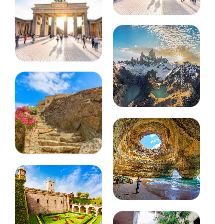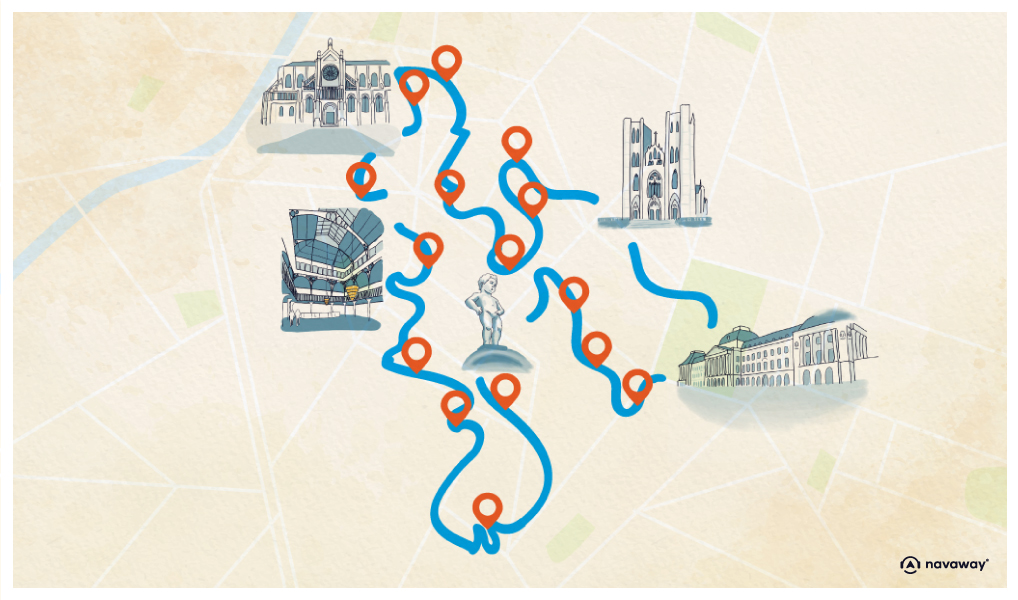
Running the Brussels Marathon: a sporting and cultural experience
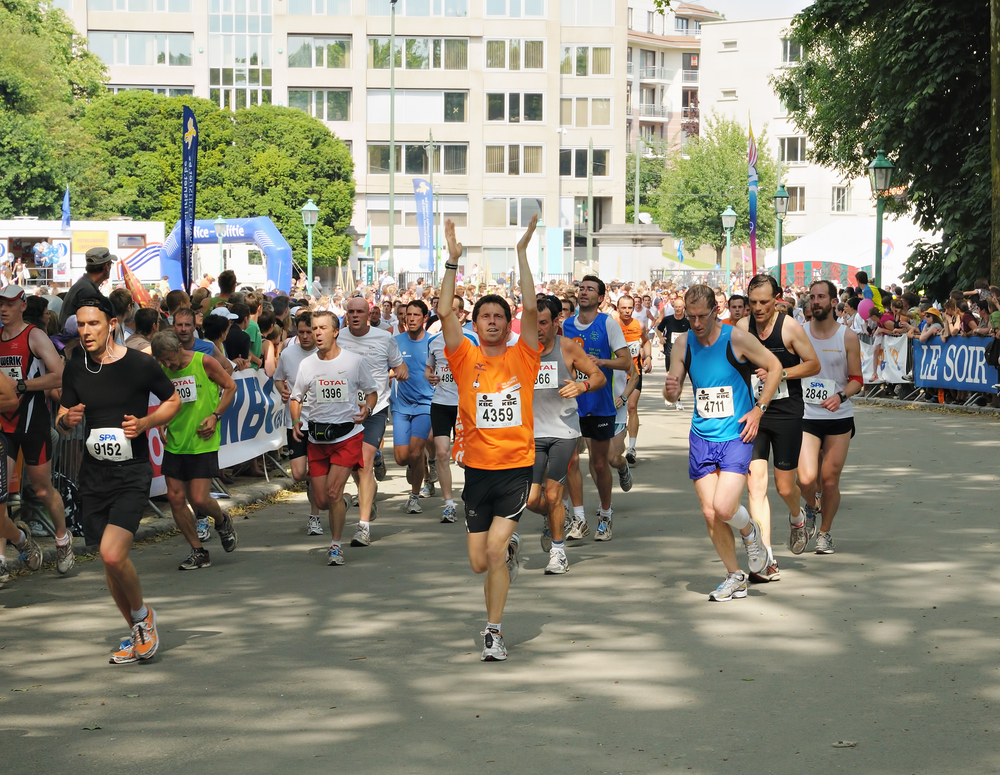
The Brussels Marathon is one of Europe’s most emblematic races, offering runners a unique experience combining sporting performance and cultural discovery. Since its first edition in 1984, this legendary event has transformed the streets of the European capital into a veritable open-air museum, where every kilometre reveals the architectural treasures and fascinating history of Visiter Bruxelles.

This legendary race doesn’t just challenge your physical limits: it invites you on an extraordinary journey through the soul of Brussels, from the majestic Grand-Place to the gardens of the Royal Palace, via the iconic Atomium and the Koekelberg Basilica. Discover why the Brussels Marathon is so much more than just a sporting event: it’s a real immersion in European history and culture.
See also the Brussels guide:
- Top 6 things to do in Brussels
- Top 10 culinary specialities in Brussels
- The best hotels in Brussels
- Excursions around Brussels
- Visit the European Parliament in Brussels
- Brussels Atomium
1. History and origin of the Brussels Marathon
The Brussels Marathon, officially known as the Brussels Airport Marathon, was first held in 1984, in the tradition of the great European urban races. The first edition, won by Belgian runner Dirk Vanderherten, marked the start of a sporting adventure that would transform the Belgian capital into a stage for marathon exploits.
For over 40 years, this AIMS-certified event (Association of International Marathons and Distance Races) has been a fixture on the international calendar. Every year, the Brussels Airport Marathon attracts nearly 8,000 participants from all over the world, drawn by a unique course that combines historical heritage and modern European design.
The originality of this race lies in its ability to help you discover Brussels from a completely new angle. Unlike traditional city marathons, the Brussels route takes you beyond the historic centre to explore the richness of the surrounding municipalities, creating a cultural as well as a sporting experience.
2. An exceptional journey through the world’s most emblematic monuments
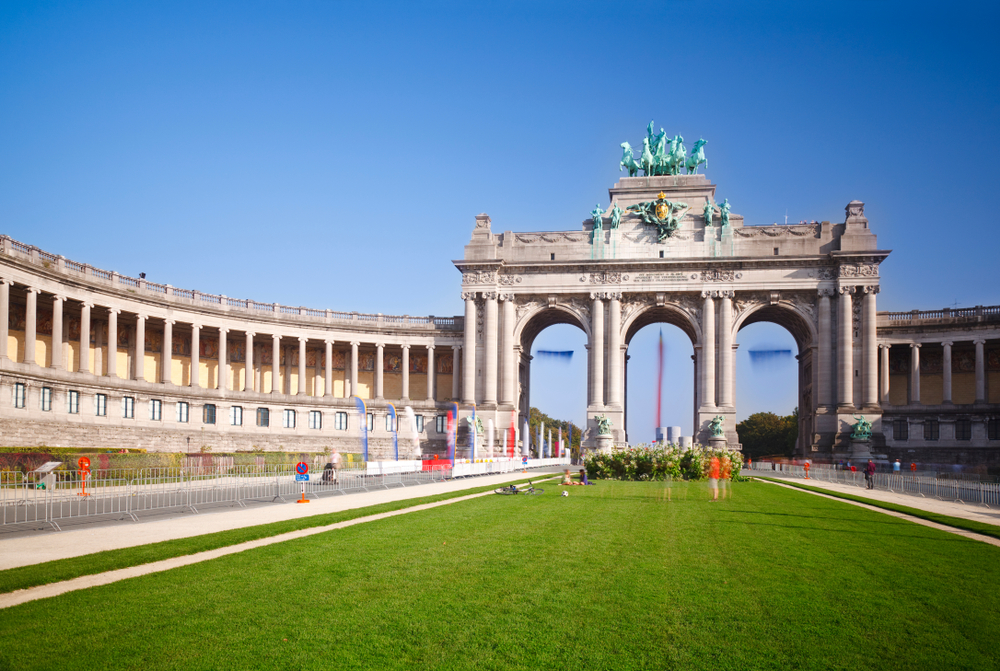
The Brussels Marathon takes you on an exceptional 42.195-kilometre journey through some of the European capital’s most beautiful monuments. The start is from the emblematic Place De Brouckère, the beating heart of Brussels, with its Belle Époque façades and its constant hustle and bustle.
From the very first kilometres, you’ll be plunged into history as you pass through the Annie Cordy Tunnel, Belgium’s longest road tunnel, before discovering the majestic Basilica of the Sacred Heart of Koekelberg (Place de la Basilique 1, 1083 Koekelberg, rated 4.2/5 on Google out of 3,200 reviews). This imposing Art Deco basilica, the fifth largest church in the world, offers runners a striking architectural spectacle.
Download the audio tour to discover Brussels on foot and on your own
To take your discovery of the Belgian capital a step further, theNavaway itinerary of Brussels takes you on a complete exploration of the city. This 6.2-kilometre route, punctuated by 25 captivating audio guides, reveals the secrets of the “Beauty of Europe” in just 2 hours and 40 minutes. From the Grand-Place to the European Quarter, via the Royal Galleries and the gardens of the Mont des Arts, let yourself be guided by the fascinating stories that bring Brussels’ exceptional heritage to life.
The marathon route continues on to some unexpected natural gems, such as the Ganshoren marshes, a veritable oasis of greenery and calm, where birdsong echoes in the heart of the city. This bucolic interlude offers runners a striking contrast with the urban environment.
After the legendary “30th kilometre wall” near the church of Notre-Dame de Laeken, you reach the Heysel plateau, famous for its emblematic monuments. TheAtomium (Square de l’Atomium, 1020 Laeken, rated 4.0/5 on Google out of 16,000 reviews) stands majestically, symbol of the 1958 Universal Exhibition and a marvel of futuristic architecture representing an iron crystal magnified 165 billion times.
3. Architectural treasures along the route
The Brussels Marathon turns each runner into an architectural explorer, revealing the exceptional stylistic diversity of the Belgian capital. The route traverses centuries of history, from Brabantine Gothic to contemporary Modernism, offering a real life-size lesson in architecture.
Although it doesn’t pass directly through the historic centre, the marathon allows you to admire the Grand-Place from afar (Grand-Place, 1000 Brussels, rated 4.6/5 on Google out of 35,000 reviews), a UNESCO World Heritage Site since 1998. This rectangular cobbled square, surrounded by 17th-century Baroque guild houses, is one of the most beautiful architectural ensembles in Europe.
The route also takes you past Saints-Michel-et-Gudule Cathedral, a masterpiece of Brabant Gothic art built between the 12th and 15th centuries. Its slender towers and facade adorned with delicate sculptures bear witness to the artistic wealth of the Middle Ages in Brussels.
Modern architecture is not forgotten, with a visit to the Palais de Justice, an imposing 19th-century neo-classical building, and the discovery of the contemporary districts that illustrate the urban dynamism of Brussels. For an in-depth exploration of these marvels, don’t hesitate to follow theNavaway itinerary, which reveals all the capital’s architectural secrets.
4. A dive into European history
The Brussels Marathon offers a unique immersion in European history, turning every kilometre into a living history lesson. As you make your way through the streets of the capital, you will follow in the footsteps of the Dukes of Brabant, Burgundian masters, Spanish sovereigns and Austrian emperors who shaped the identity of Brussels.
Running near the European quarter is a reminder that Brussels has been home to the institutions of the European Union since the 1950s. This European dimension gives the marathon a special symbolism: running in Brussels means treading on the ground where the future of the continent is being shaped.
Royal monuments also line the route, bearing witness to Belgium’s monarchical history. The proximity of the Palais Royal, the Parc de Bruxelles and the Laeken gardens evokes almost two centuries of reign by Belgian dynasties, since independence in 1830.
This wealth of history is fully revealed during your post-marathon exploration of Brussels thanks to the Navaway audio tour, which reveals the anecdotes and secrets of each of the city’s emblematic monuments.
5. Cultural diversity at the heart of the race
The Brussels Marathon is a perfect illustration of the cultural diversity that characterises the Belgian capital. As you cross the ten Brussels municipalities on the route, you’ll discover a kaleidoscope of traditions, languages and cultural influences that make this cosmopolitan metropolis so rich.
This diversity is reflected in the architecture, with a harmonious blend of Flemish, Walloon and international buildings. Passing by the Japanese Tower and Chinese Pavilion in Laeken Park even brings a touch of exoticism from the East, a testimony to the Universal Exhibitions that have marked Brussels’ history.
Local gastronomy also accompanies the runners along the route, with refreshment stands offering Belgian specialities: waffles, chocolates and craft beers to celebrate the finish. This culinary dimension adds an authentic flavour to the marathon experience.
The marathon’s international atmosphere also reflects Brussels’ status as a European capital, attracting runners from every continent united by a passion for running and cultural discovery.
6. Green spaces, the lungs of the capital
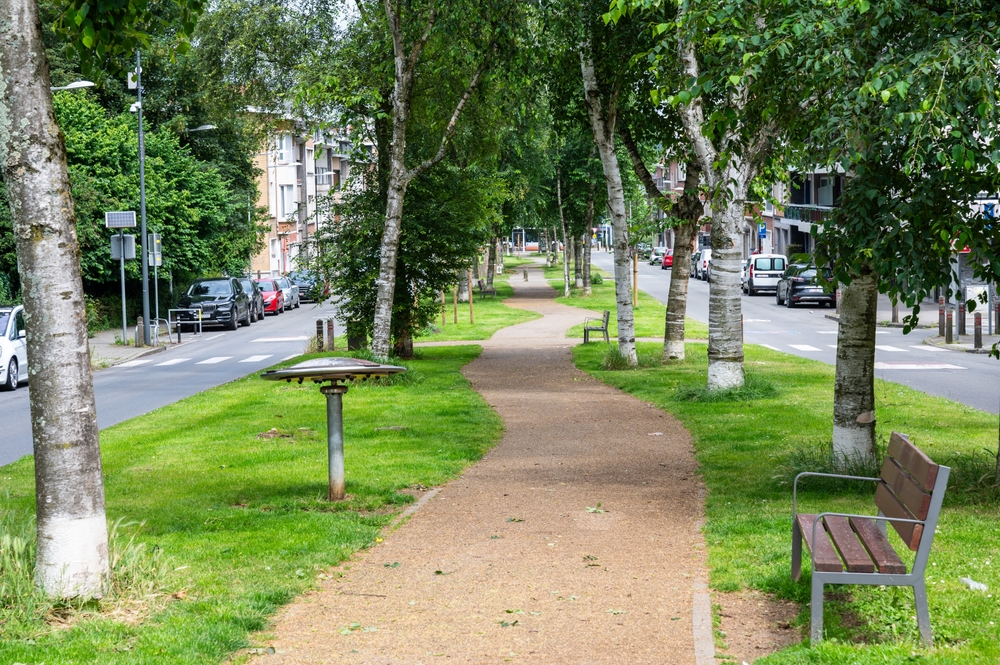
One of the most pleasant surprises of the Brussels Marathon is the many green spaces along the route. Contrary to popular belief about large metropolises, more than half of the Brussels region is made up of green spaces, offering runners refreshing visual breaks.
The Ganshoren marshes are a real natural jewel at the heart of the route. This urban nature reserve, with its ponds, lush vegetation and diverse fauna, offers a striking contrast to the urban environment. Birdsong accompanies the runners in this unexpected haven of peace.
The Parc du Cinquantenaire, with its 30 hectares of carefully tended green spaces, is one of the highlights of the marathon. Created in 1880 to celebrate the fiftieth anniversary of Belgian independence, this majestic park is home to prestigious museums and the Arc de Triomphe du Cinquantenaire, an architectural masterpiece by Charles Girault.
These green lungs allow runners to recuperate while admiring the natural beauty of Brussels. To discover other emblematic green spaces in the capital, theNavaway route guides you through the gardens of the Mont des Arts and the hidden squares of the historic centre.
7. A majestic finish at Place des Palais
The climax of the Brussels Marathon takes place on the prestigious Place des Palais, opposite the Royal Palace (Place des Palais 1, 1000 Brussels, rated 4.3/5 on Google out of 2,800 reviews). This grandiose finish, full of emotion and symbolism, is the magnificent culmination of the 42.195 kilometres covered.
The Royal Palace, official residence of the Belgian sovereigns, unfurls its majestic neo-classical façade before the exhausted but triumphant riders. Built in the 19th century by the architect Tilman-François Suys and enlarged under the reign of Leopold II, this symbol of the Belgian monarchy provides an exceptional backdrop for celebrating the achievement.
The Place des Palais, with its French-style gardens and homogeneous architecture, creates a solemn and festive atmosphere that leaves a deep impression on the finishers. Arriving at the heart of Belgium’s royal government lends a special dimension to sporting success, turning every marathon runner into an ambassador for this unique experience.
The emotion of crossing the finish line in this exceptional historical setting remains engraved in the memories of all the participants, making the Brussels Marathon much more than just a race: it’s a real voyage of initiation to the heart of Europe.
8. The technical challenges of the course
The Marathon de Bruxelles has special technical features that make it a stimulating challenge for runners of all levels. With a positive altitude difference of 335 metres, this demanding course requires specific preparation and careful tactical management of the effort.
The profile of the course is characterised by significant climbs, notably towards the Koekelberg Basilica and the Heysel plateau, alternating with technical descents that challenge different muscle groups. This topographical variety makes the race particularly rewarding from a sporting point of view.
The underground passages, such as the Annie Cordy tunnel and the Cinquantenaire tunnel, add a unique psychological dimension to the event. These weather-protected segments offer a special atmosphere and allow the riders to concentrate on their pace.
Despite these technical challenges, the Brussels Marathon remains accessible thanks to excellent signposting, regular refreshment stops every 5 kilometres and the presence of experienced pacemakers. This professional organisation means that everyone can enjoy the Brussels adventure to the full, whatever their performance.
9. The festive atmosphere and the Brussels audience
The exceptional atmosphere of the Brussels Marathon is one of its major assets, transforming each edition into a real popular festival. The people of Brussels, renowned for their warmth and hospitality, make the event their own, cheering on the runners en masse all along the route.
From the early hours of the morning, the streets are decked out in the colours of the marathon. Families, friends and ordinary onlookers line up at strategic points to create a wall of vocal support that literally carries the runners to the finish. This collective energy transcends nationalities and unites participants and spectators in a unique sporting communion.
Musical entertainment regularly punctuates the route, with local groups, brass bands and DJs keeping up the lively rhythm. This live soundtrack is the perfect accompaniment to the discovery of the monuments and districts we pass through, creating a complete sensory experience.
The post-race festivities continue with celebrations on the Place des Palais, where runners and support staff gather to share the emotion of the moment. This legendary Belgian conviviality makes the Brussels Marathon as much a human event as a sporting one.
10. Half-marathon and other distances: a complete range
The Marathon de Bruxelles offers a full range of distances to suit every profile of runner, from novice to experienced marathoner. This diversity allows each participant to enjoy the Brussels experience according to his or her personal abilities and objectives.
The Brussels Half Marathon, with its 21.0975 kilometres and 250-metre gradient, offers an excellent compromise between a sporting challenge and sightseeing. The route takes in iconic sites such as the Atomium, the King Baudouin Stadium and Josaphat Park, with a spectacular passage through the Cinquantenaire tunnel.
The 7-kilometre race offers a more accessible but equally rewarding experience, focusing on the political heart of Europe. Starting on rue de la Loi, this compact course passes through the Cinquantenaire tunnel and Place Montgomery before reaching the finish on Place des Palais.
The one-kilometre Kids Run allows the youngest runners to take part in the adventure, creating a complete family event. This intergenerational dimension reinforces the popular aspect of the Brussels Marathon and encourages the transmission of a passion for running.
In conclusion, the Brussels Marathon is much more than just a sporting event: it’s a true cultural immersion in the heart of Europe. This unique race transforms each participant into a privileged explorer of the Belgian capital, revealing its architectural treasures, its thousand-year-old history and its exceptional cultural diversity. From the Ganshoren marshes to the Place des Palais, via the Atomium and the Koekelberg Basilica, every kilometre covered enriches your understanding of this fascinating metropolis. To extend this discovery and explore Brussels in depth, don’t hesitate to follow theNavaway itinerary, which will reveal all the secrets of the “Beauty of Europe”.
FAQ about the Brussels Marathon
When does the Brussels Marathon take place?
The Brussels Airport Marathon usually takes place in autumn, traditionally at the beginning of November. The next edition is scheduled for Sunday 2 November 2025, starting at Place De Brouckère and finishing at Place des Palais.
How difficult is the Brussels Marathon?
With a difference in altitude of 335 metres, the Brussels Marathon is considered moderately difficult. The course features several significant climbs, but remains accessible to well-prepared runners. Technical sections such as tunnels add tactical interest to the race.
What monuments can you see during the race?
The route passes through a number of emblematic sites: the Koekelberg Basilica, the Atomium, the Japanese Tower, the Chinese Pavilion, the Parc du Cinquantenaire, the Rue de la Loi (European Quarter), and finishes opposite the Palais Royal. Although it doesn’t pass directly through the Grand-Place, the marathon offers a complete discovery of Brussels’ heritage.
How do I register for the Brussels Marathon?
Registration generally opens several months before the race on the official Brussels Airport Marathon website. Early registration is recommended as the event is often fully booked. Different prices are available depending on the date of registration and the distance chosen.
How much does it cost to enter the Brussels Marathon?
Prices vary according to distance and registration period: around €85-95 for the marathon, €35-43 for the half-marathon, and €19-24 for the 7km. Prices generally rise as the registration deadline approaches.
200 audioguided tours for cities all around the world
Download